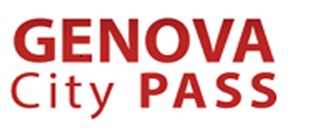Diocesan Museum
Nestled between the St. Lorenzo Cathedral and Palazzo Ducale, the Diocesan Museum lies in the heart of Genoa: with respect to major thorough fares it is in a side street, via Tommaso Reggio. Entering the Museum you discover an unexpected and surprising building containing precious works of art: a medieval cloister full of frescoes and built on an ancient Roman domus; a wealth of paintings and sculptures, fabrics, illuminated manuscripts, silver, reliquaries, musical instruments and an initial archaeological section, that tell the artistic history of the city.
The building that houses the museum has a complex structure, the result of the numerous developments that have taken place over time: erected as the residence of the Canons of the Cathedral in the second half of the 12th century, in an area which had been used as settlements in Roman times, its many additions have left visible the changes of the following centuries giving us an extremely interesting architectural artefact, in itself a good reason to visit.
A visit to museum follows a chronological sequence over four floors, interspersed with themed rooms, among which, and genuinly unique, is that dedicated to the display of the sixteenth-century The Passion Canvases (depicted on a fabric which is the precursor to jeans).
The collection of the Diocesan Museum is composed primarily of works belonging to churches of the diocese: only a small part has been received through donations or belongs directly to the Museum, which is therefore in charge of their conservation, protection and enhancement.
Top Ten
In the rich museum collection there are works that tell not only the story of how they were created, by whom and for what purpose, that is the data traditionally linked to the understanding of a work of art, but they also allow us see the continuous thread that persists between the distant past and our present.
The Museum includes a unique room that houses The Passion Canvases, on loan from the Ministry for Cultural Heritage and Activities and for Tourism: fourteen large linen cloths dyed with indigo and bearing white lead paintings, they formed an ephemeral apparatus for Week Holy and depict scenes from the Passion of Christ. They are the work of artists from different eras, starting with sixteenth-century masters who were inspired by Dürer's engravings. The material is considered a precursor of the jeans fabric, which, as is well known, was used for the first time in Genoa and owes its name to the city.







Follow us on Facebook
Follow us on Tripadvisor
Follow us on Instagram
Follow us on Twitter